We have a special attachment to Michigan
State University Horticulture Gardens. We studied campus plants
as students of Landscape Technology on field trips with one of
MSU's finest grads, Marshall Baeckeroot. Later when the acres you
see here were first developed as gardens we were allowed to work
there to illustrate articles, teach classes, even bring our own
students there for Garden By Janet and Steven sessions.
Currently, one of our former students is horticulturist in charge
of the perennial gardens.
This article is Sponsored by:
The gardens are spacious but jam packed with hundreds of
perennial species. You can walk for hours. Bring paper and pencil
or a camera to record plant names because you'll want to reproduce
what you see.

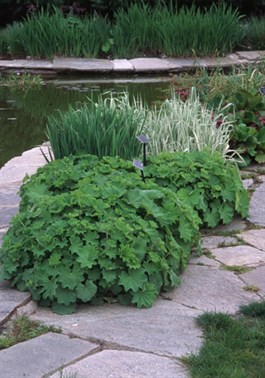

There are also many places to sit and admire the color and the
motion. Being on a busy campus it's also a good place for people
watching.

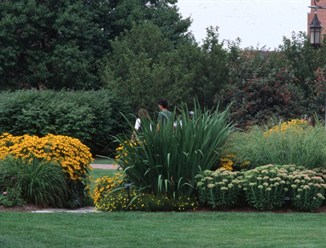
This end of the perennial area, closest to the ever-hoppin'
childrens' garden, tends to be the most productive of small
children - college student interactions, which we find most
interesting.

Yet all of this is managed by one person, often working alone.
That's the case in many big gardens so be sure to say "thanks" if
you see someone working there, as it may not be 'just some
gardener.' In fact, in talking to the gardeners and managers of big
gardens like this over the years we've heaved many a sigh of relief
that it isn't just us, that even the best gardens' staff tears
their hair over -- you name it. For instance, critters: we've
learned battle strategies for marauding voles in one garden,
commiserated with peers in another garden plagued with deer that
crawl under fences, laughed and learned in a third how muskrats
that chew through pond liners can divert water in an invisible
underground stream to nearby bed.
Above, right: Talk to the gardener(s) working in this small
section of bed and learn things like 1) the pearly everlasting
(Anaphalis triplinervis, foreground) is important not only
for late summer bloom but as a host plant to the American Painted
Lady butterfly caterpillar; 2) that maintaining the cut edge on the
bed requires two rounds of cutting and thorough weeding each year;
3) that rabbit hutch wire cages placed very early in the year may
be the only remedy for rabbit damage.
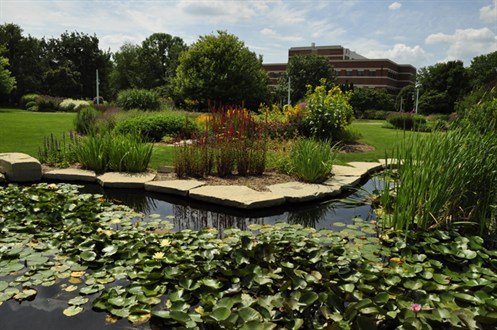
No matter what time of year, these gardens are beautiful. The
grasses shine into December, aided by berries on background shrubs
such as winterberry (Ilex verticillata) and trees (crabapples,
hawthorns). The evergreens and stalks of intentionally placed
perennials carry the show even in March. We've told many a design
class to begin their designs with an area's late winter aspect
because if you like it in March, it's a keeper.
This whole garden's a keeper.

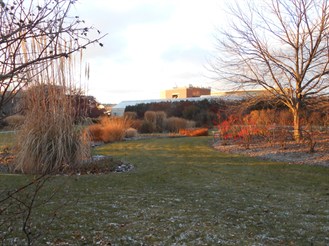
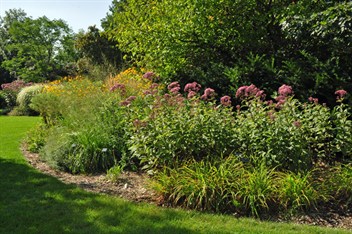

Of all the areas in this big botanical garden --
Arboretum, Childrens' Garden, annual trial area, rose garden,
ornamental grass demonstration area, conifers, etc. -- we go back
furthest and closest to the Judith DeLapa Perennial Display Garden.
What fun it is to know a garden since it was a blank slate, to see
it planted, mature, and evolve as its trees grow...!
Thanks in part to gardens manager Renata Reibitz' Sponsorship,
we've begun to convert photos of the gardens in their first years
to digital and will soon update this page to take you along that
fun and educational before-after path.
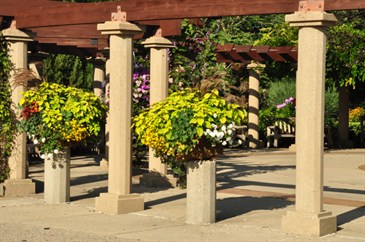
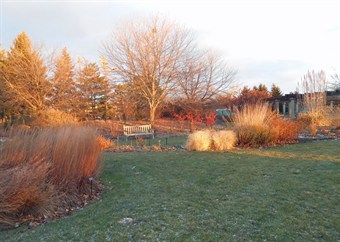

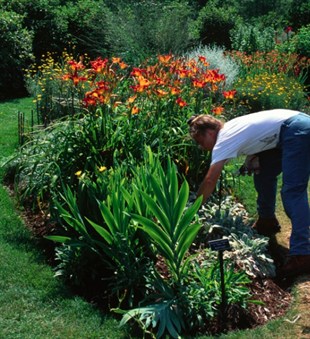
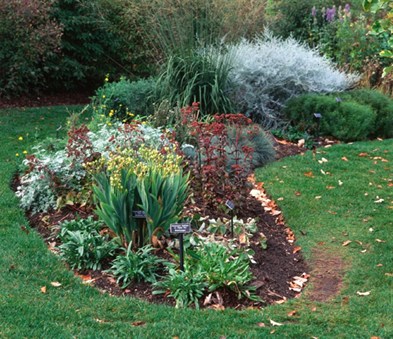
Renata Reibitz

For more reader recommended
articles...
You, too, can Sponsor us and keep this effort
growing!
.